

William Stopford
The cars axed in 2025 that we'll miss the most
49 Minutes Ago
Two electrified family SUVs from Japan go head-to-head.

Senior Contributor
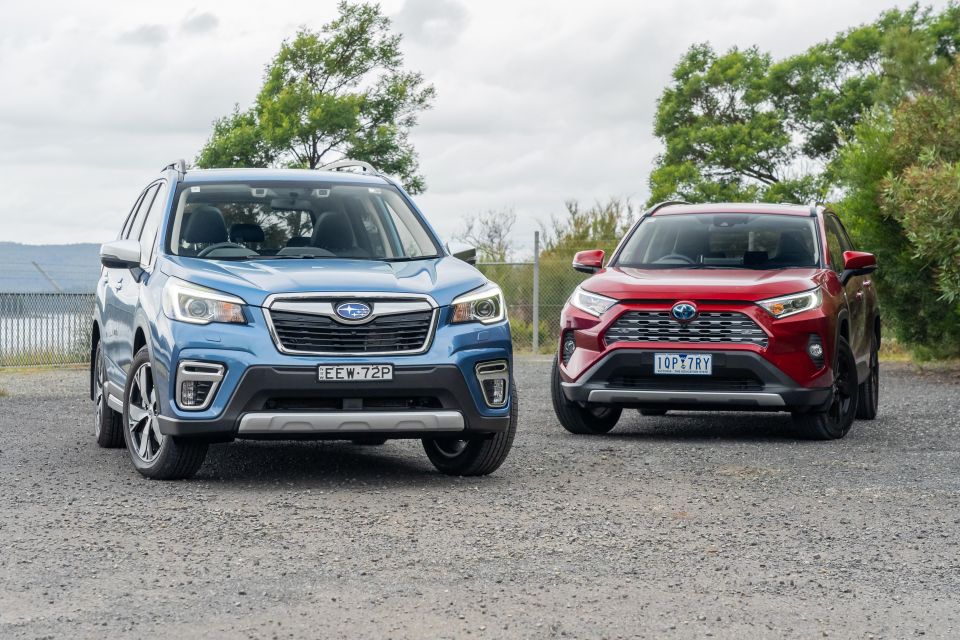

Senior Contributor
The Toyota RAV4 and Subaru Forester are without doubt two of the finest affordable mid-sized SUVs.
Neither is what you’d call an excitement machine, but when it comes to practicality, quality, and safety this Japanese pair are right up there.
Ditto in the fuel efficiency stakes. That’s because they’re both sold with petrol-electric hybrid drivetrains designed to slash your fuel bills without adding too much to the initial purchase price.
But not all hybrids are created equal…
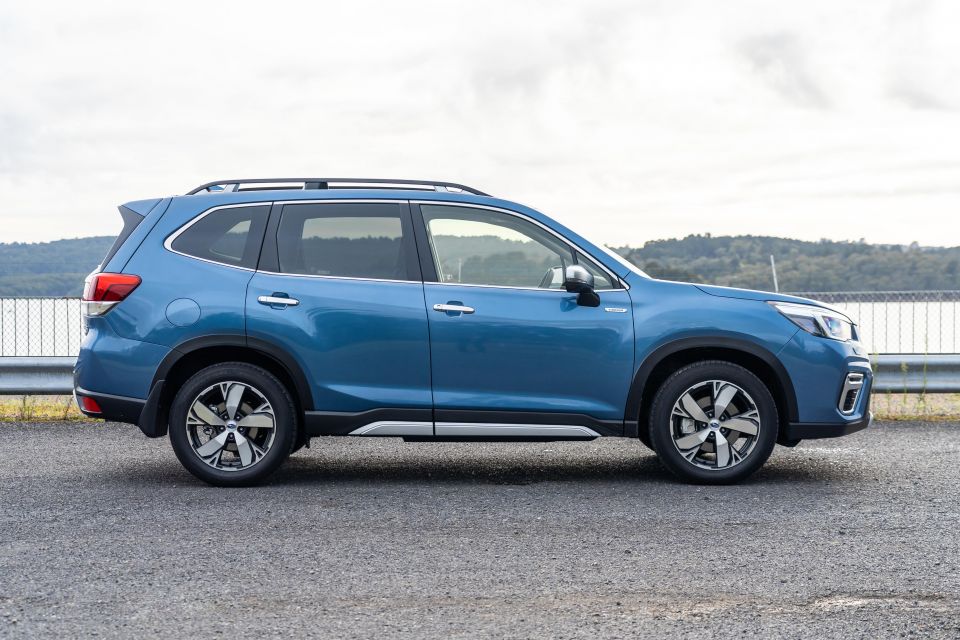
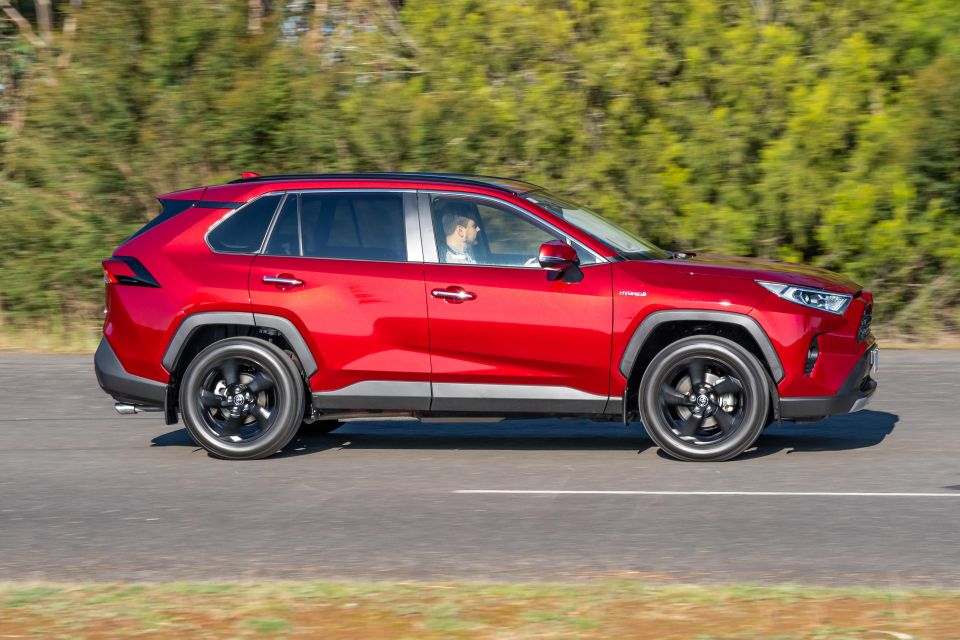
The flagship Forester Hybrid S all-wheel drive (AWD) costs $45,990 before on-road costs. That makes it $3000 more expensive than the equivalent flagship 2.5i-S petrol-only variant.
The equivalent RAV4 Cruiser hybrid kicks off at $43,290 before on-roads as a front-wheel drive (FWD). You can buy the optional second-motor AWD model for an additional $3000. The cost premium for the hybrid over the petrol-only offering is $2500.
It’s worth noting both models are available in lower-specification forms with hybrid drive: the starting price of the RAV4 GX hybrid is $36,790, and the Forester Hybrid L $39,990.
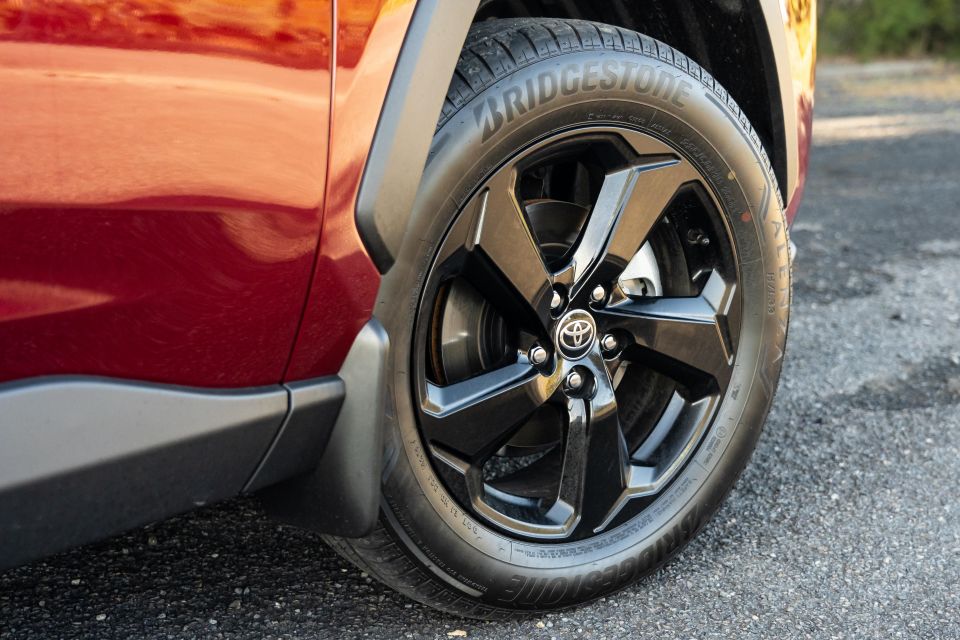
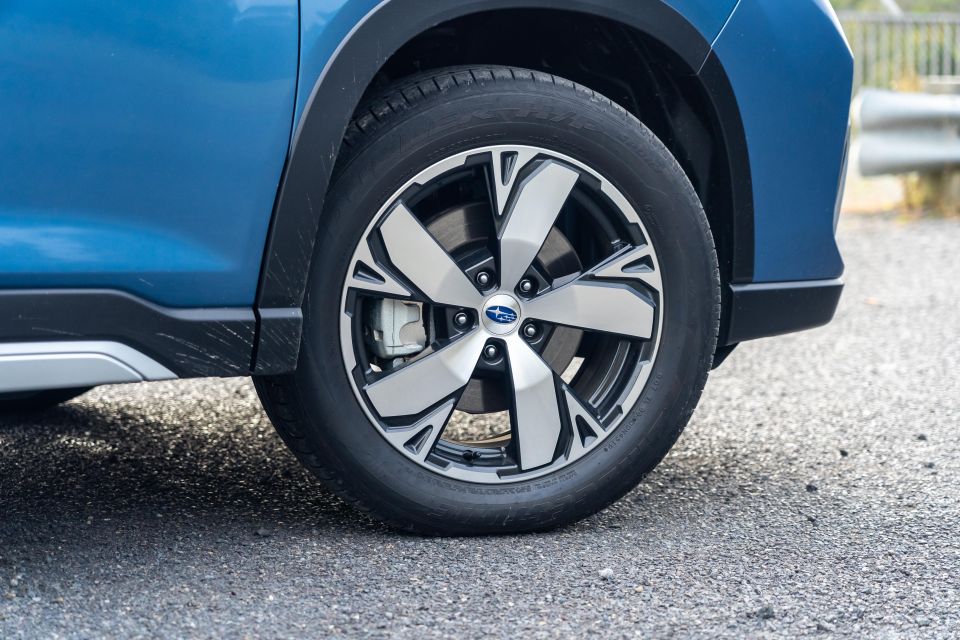
The respective standard-features lists are very similar.
On the outside both get 18-inch wheels, dusk-sensing LED headlights, LED rear lights and daytime running lights, darkened privacy glass behind the B-pillar, roof rails, rain-sensing windscreen wipers, and a powered tailgate.
On the inside both have dual-zone climate control, a proximity key fob that unlocks the car hands-free when you draw near, a starter button, leather ‘accented’ seats, heated front seats, power adjustment and memory presets for the driver’s seat, and a sunroof.
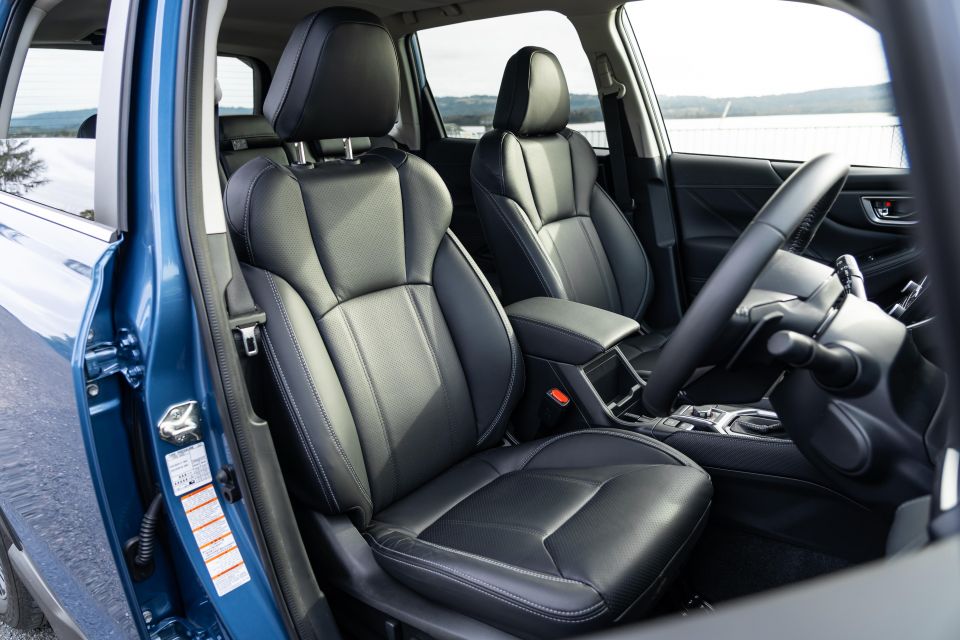
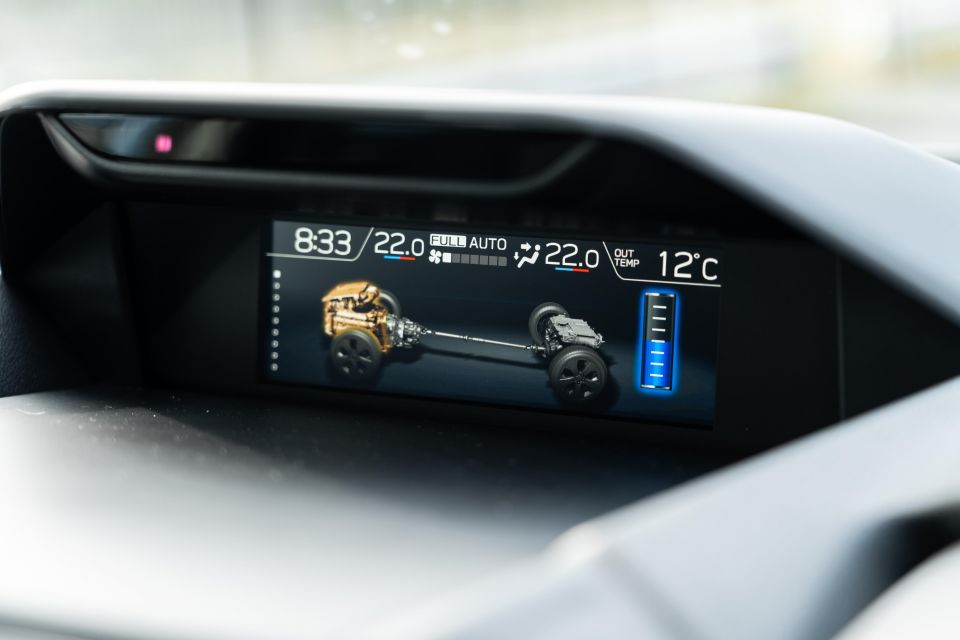
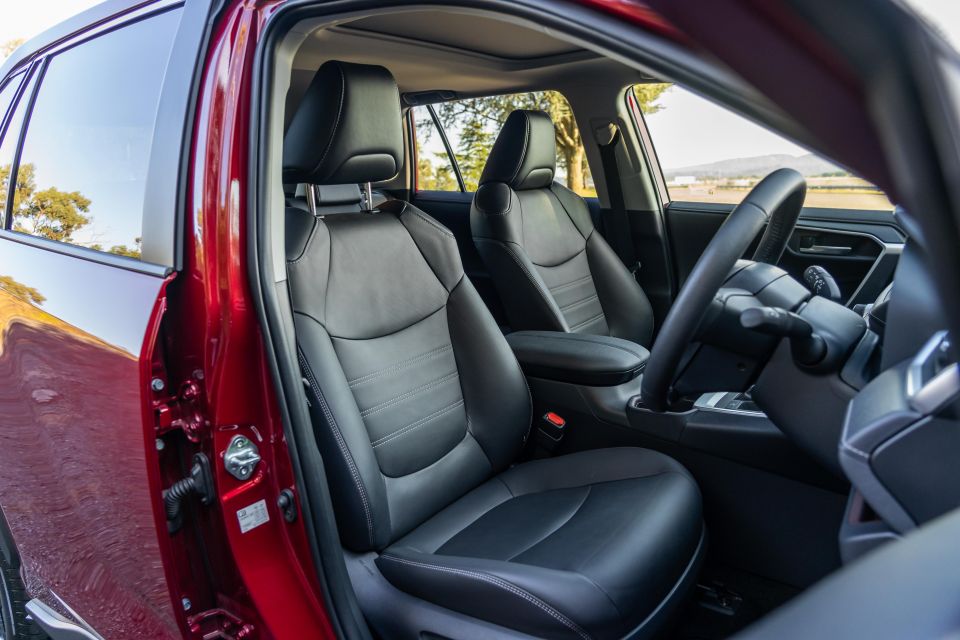
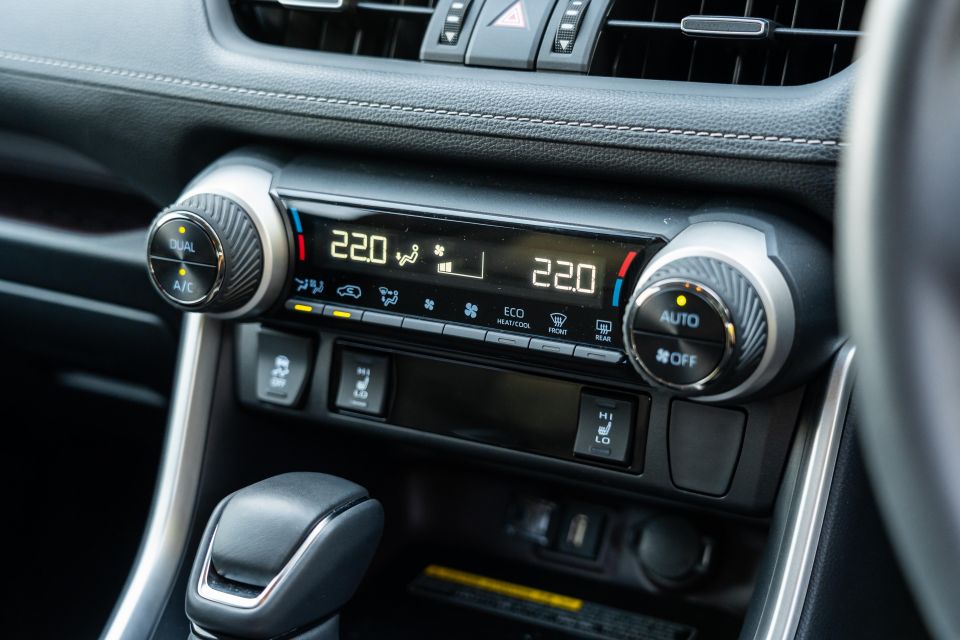
In terms of entertainment, both have an 8.0-inch centre touchscreen, digital radio, satellite-navigation, Apple CarPlay and Android Auto phone mirroring, Bluetooth, multiple USB points in both rows, and surround-view cameras. Each also has an upgraded sound system over the base models – the Subaru’s made by Harman/Kardon and the Toyota’s by JBL.
There aren’t a heap of unique features. The Subaru has a kerbside mirror that automatically dips when parking, electric seat adjustment for the front passenger, and a CD player. The Toyota alone offers a wireless phone charging pad, and a space-saver spare wheel (the Subaru makes do with a puncture kit).
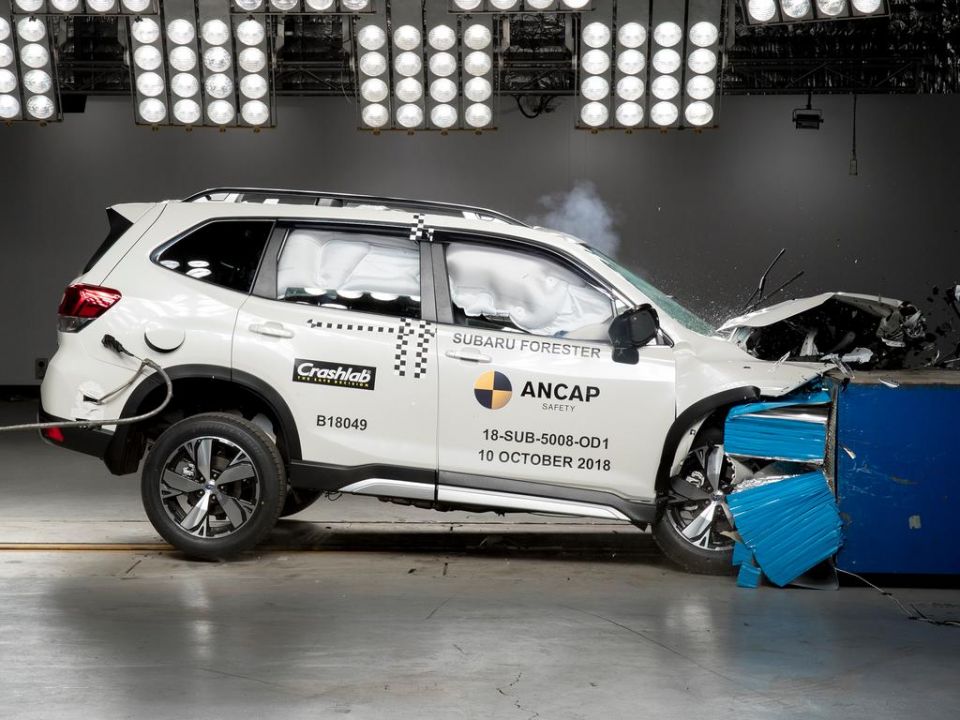

Standard fare on both includes seven airbags, seatbelt warning chimes, three top-tether child-seat points, and two Isofix anchors.
In terms of active safety each offers the gamut, using camera/radar data. Each has collision alert, autonomous emergency braking (AEB) also designed to detect pedestrian and cycles, active cruise control, automatic high-beam control, lane-departure alert, lane-keeping aid, blind-spot monitoring, and rear cross-traffic alert.
The Subaru also offers a ‘Driver Monitoring’ system with drowsiness and distraction warning systems and facial recognition, plus reverse AEB, and Lead Vehicle Start Alert that beeps at you in traffic if the car ahead moves and you don’t follow. The Toyota includes a Road Sign Assist camera function.
Both cars were awarded the maximum five stars by crash-tester ANCAP, with 2019 date stamps.
| ANCAP protection score | Forester | RAV4 |
|---|---|---|
| Adult Occupant | 94% | 93% |
| Child Occupant | 86% | 89% |
| Vulnerable Road User | 80% | 85% |
| Safety Assist (AEB, LKA etc) | 78% | 83% |


Subaru
Spacious and bright are the optimal words. The slim (front) A-pillars and big side windows mean outward visibility is excellent. Throw in the fitted sunroof and you feel closer to the outdoors than you might in many competitors.
Material quality is good, with soft touch points throughout and dimpled faux leather trim fitted, and the build quality feels typically robust.

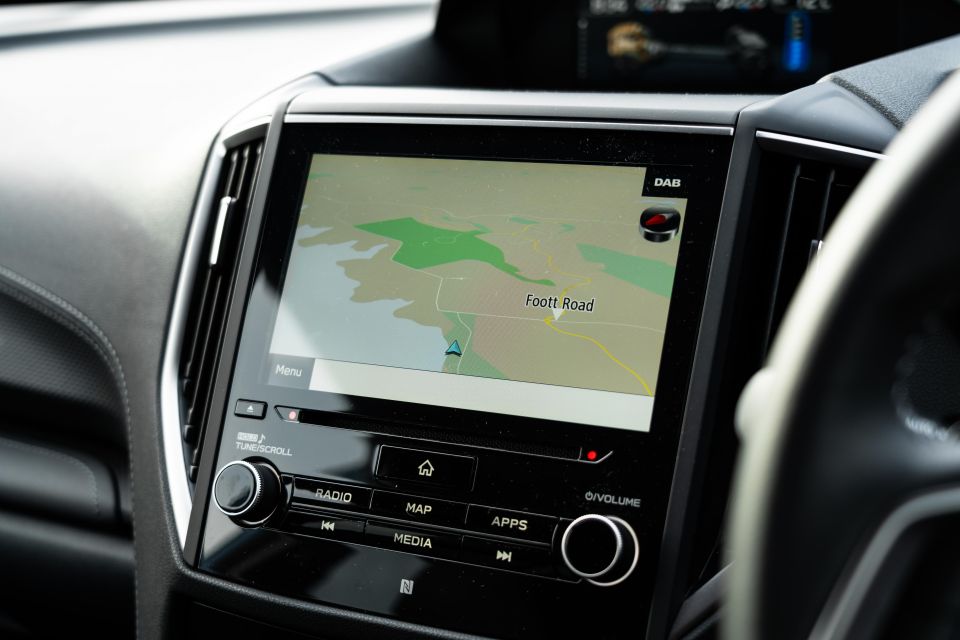
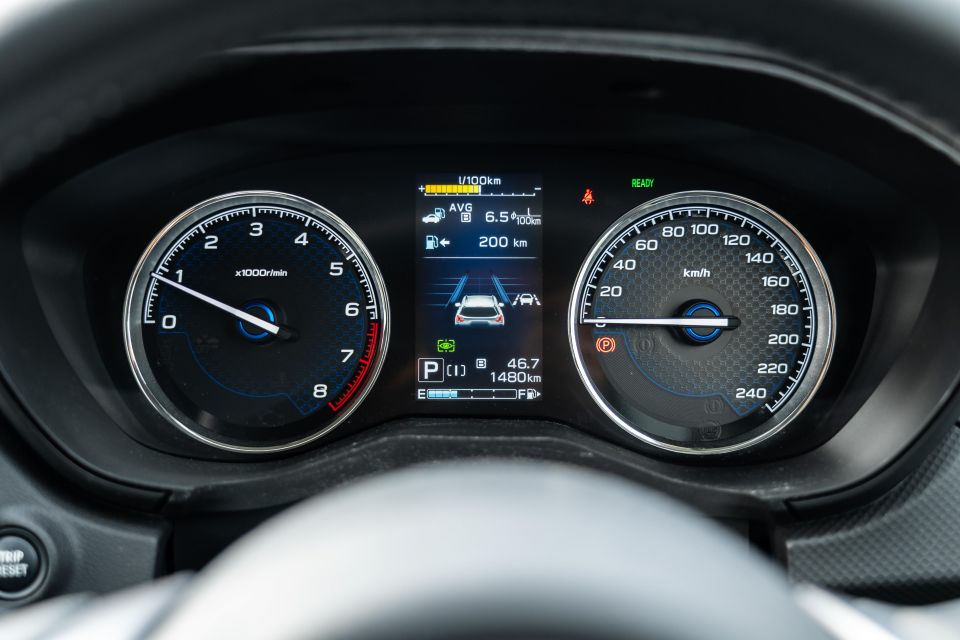
There are ample seat and wheel adjustments, although the plethora of buttons adorning the steering wheel look like information overload at first.
The centre stack is dominated by that bright touchscreen. Above this is a smaller screen showing front- and kerbside camera views, off-road (pitch angle, torque flow), and hybrid drive data.
Infotainment comprises an 8.0-inch screen, digital radio, Apple CarPlay and Android Auto, factory satellite navigation, a CD player, Bluetooth phone and streaming, voice recognition powered by Siri if you’re an Apple user, and a good audio system with eight speakers.
One cool feature is a memory preset system based on facial-recognition camera inputs. Once you have ‘saved’ your face under a linked profile, the system can then recognise when it’s you clambering into the driver’s seat and can subsequently change your seat position, side-mirror angle, and last used climate control temperature.
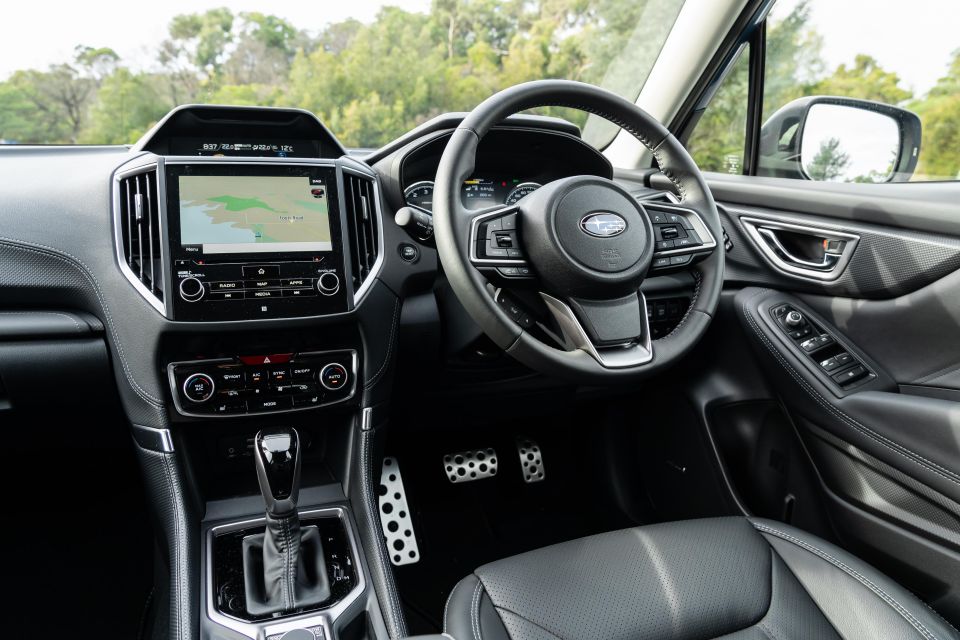
Storage space is sufficient by way of a centre console, bottle-friendly door bins, and a sunglasses holder in the roof. I also liked the extending plastic pieces on the sun visors that help you shut out dawn or dusk glare. Sometimes it’s the small things.
The back seats offer vast legroom, headroom and shoulder room. I’m 194cm and was quite comfortable behind my own preferred seating position. As I mentioned earlier it’s also very easy to see out, and the low window-line is especially kid-friendly.
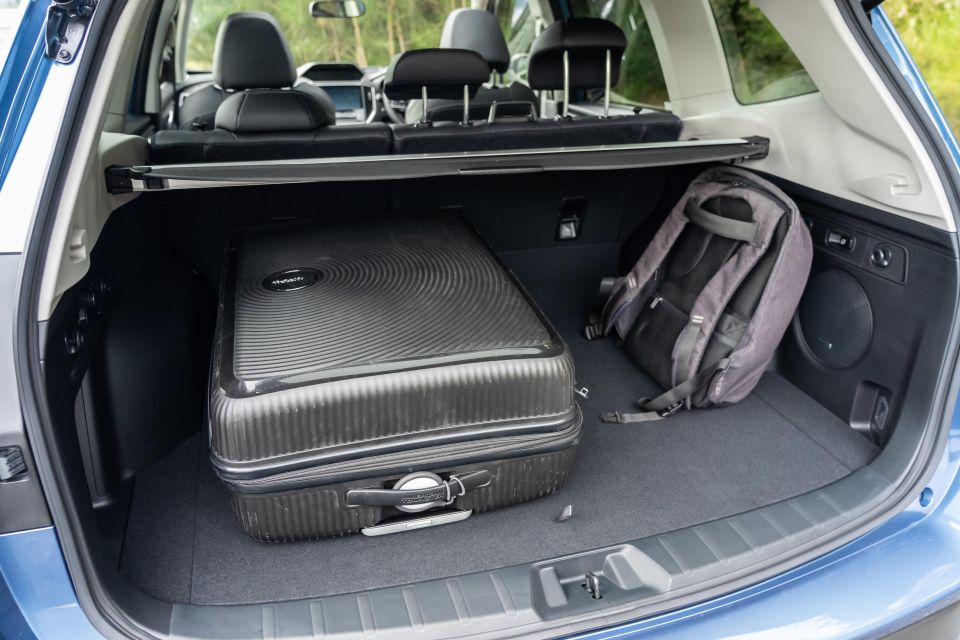
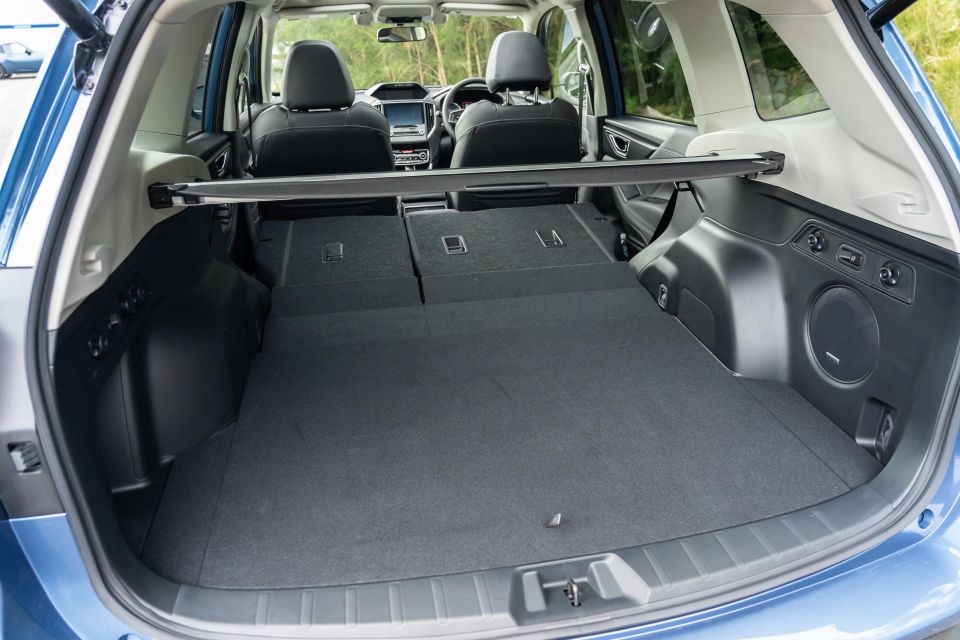
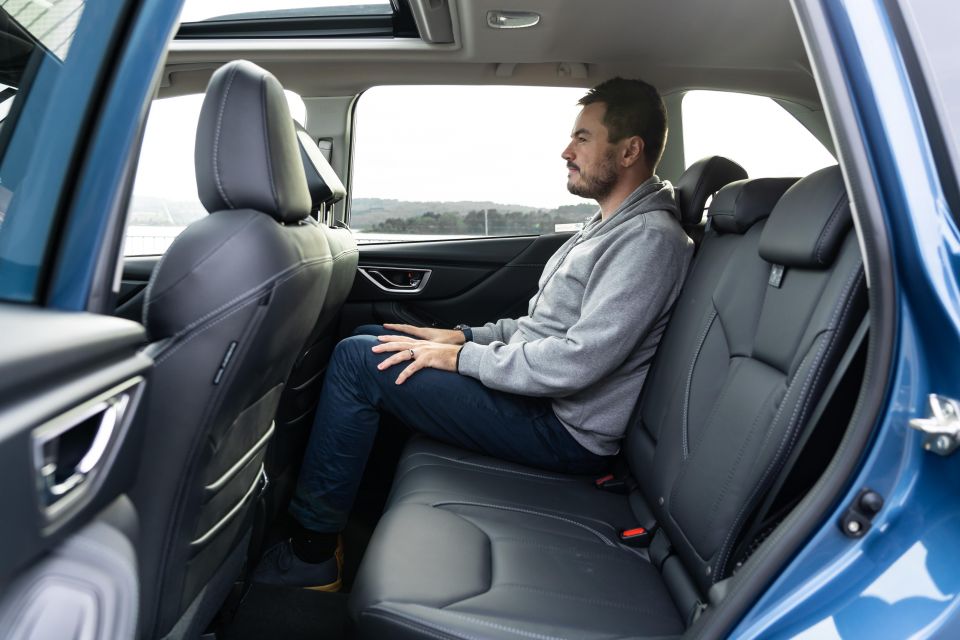
‘Amenities’ include two ISOFIX anchor points, three top-tether points, multi-section seat-back pockets, separate rear air vents, and two rear USB points – meaning there are four in the cabin overall.
These back seats fold down mostly flat via pulleys situated in the boot. Said boot also has four take-away hooks.
The hybrid battery does not impinge on the space, which is a fairly generous 509L, although unlike petrol-only Foresters there’s no full-sized spare wheel, or even a temporary one. Instead you make do with a puncture kit and an air compressor.

Toyota
The front seats are well bolstered. Both they and the steering column have ample breadth of adjustment. You sit up quite high, and are afforded generous outboard visibility.
The instrument binnacle comprises analogue fuel and eco gauges, a digital speedo, and a configurable trip computer displaying active safety functions, fuel use, audio functions, settings, and more.
While Toyota doesn’t beat you over the head with stylistic accoutrements that scream “hybrid”, the blue needles and green display font are subtle nods, alongside the blue exterior badging.


The 8.0-inch touchscreen is mounted high and flanked by eight shortcut buttons and two rotary dials to change track and volume.
The home screen shows sat-nav, plus two other tiled sections such as fuel use and audio settings. If you’re anything like me though, you’ll use the Apple CarPlay and Android Auto phone mirroring functions to stream music and podcasts, and for Waze or Google Maps.
The audio system sounds pretty good playing music, but the quality of phone calls in either Bluetooth or CarPlay modes proved disappointingly tinny.

Below this sit the climate control settings, dominated by chunky rubbery dials that are quite satisfying to twirl. Below this is a wireless charging pad, giving way to a gear shifter flanked by driving mode buttons, and the electric parking brake.
There’s a heap of storage. You get a decent-sized tiered console, big door bins, two nicely sized cup holders, and a rubberised open section above the glovebox. There’s also a sunglasses cubby mounted just ahead of the glass sunroof.
The back seats offer plenty of legroom, headroom, and knee room for my frame behind my own driving position, with the sunroof barely affecting head space. The toe room under the seat ahead is also plentiful, and the seats themselves recline. The pitch of the base is quite angled, and there’s good under-knee support.
There is a USB point for all five occupants in the RAV4, and rear air vents and reading lights, plus door bins and a flip-down centre armrest with cup holders.


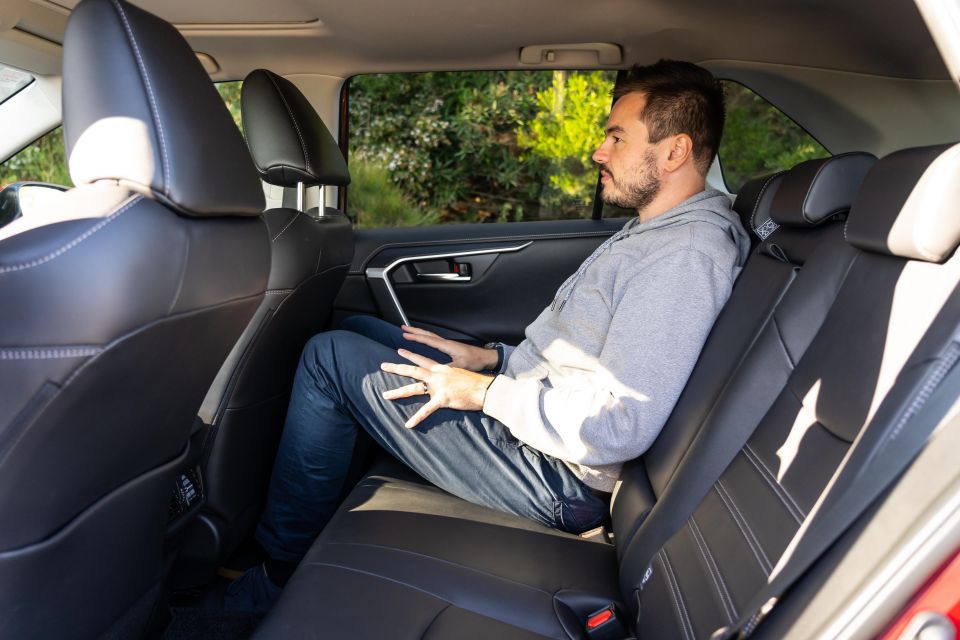
These seat backs fold quite flat, taking boot space from an already high-for-the-segment 580L to something positively van-like. The cargo area sports a retractable cargo cover and a 12V socket, but lacks shopping hooks and shortcut levers to fold the back seats.
While there’s no full-size spare tyre, at least there’s a temporary space-saver rather than the Forester’s repair kit.
| Forester | RAV4 | |
|---|---|---|
| Length | 4625mm | 4600mm |
| Width | 1815mm | 1855mm |
| Height | 1730mm | 1690mm |
| Wheelbase | 2670mm | 2690mm |
| Turning circle | 10.8m | 11m |
| Boot space, 5 seats in use | 509L | 580L |
| Ground clearance | 220mm | 200mm |
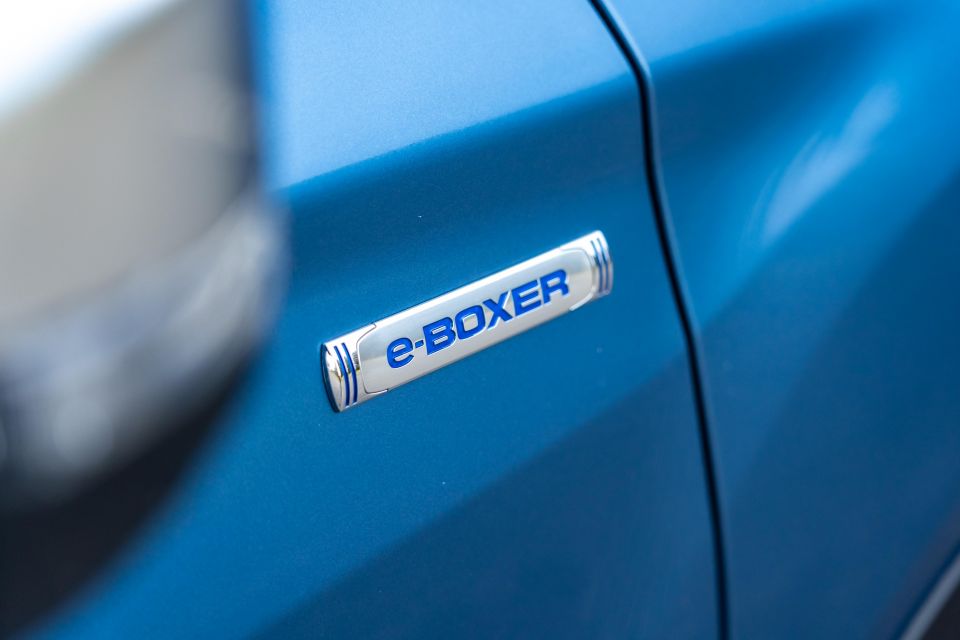
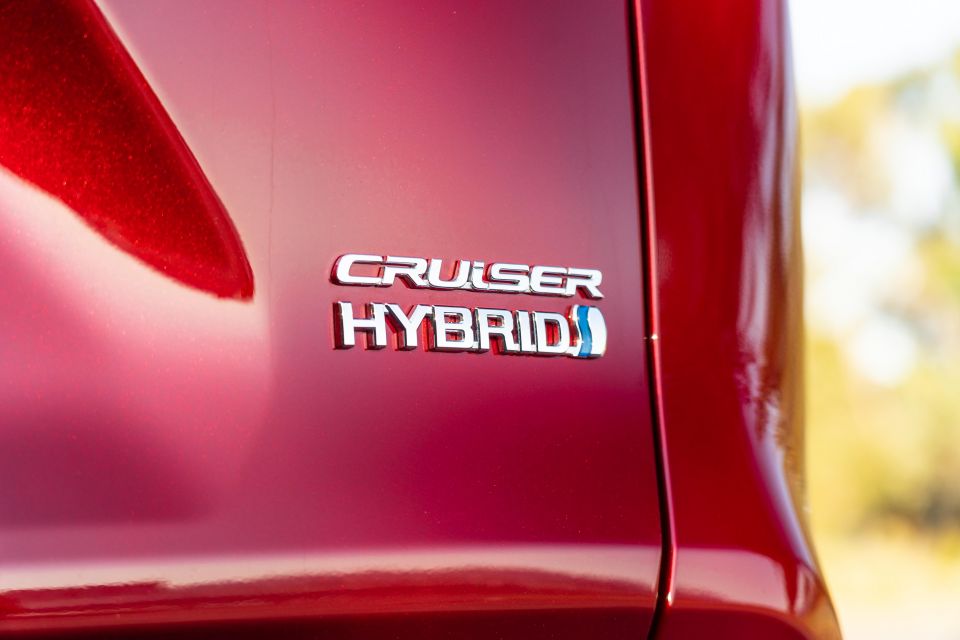
Where expert car reviews meet expert car buying – CarExpert gives you trusted advice, personalised service and real savings on your next new car.
Subaru
The Subaru Forester drivetrain pairs a 2.0-litre Boxer (flat) four-cylinder engine making 110kW of power at 6000rpm and 196Nm at 4000rpm, with a 12.3kW and 66Nm electric motor, CVT, and lithium-ion battery pack.
Like all Subarus with the exception of the BRZ coupe (developed in conjunction with Toyota, no less) the Forester S Hybrid is all-wheel drive as standard.
The Subaru’s fuel use claim is 6.7L/100km on 91 RON, and CO2 emissions equate to 152g/km.
Toyota
By contrast, Toyota’s drivetrain pairs a 2.5-litre naturally-aspirated engine making 131kW of power and 221Nm of torque, with an 88kW and 202Nm electric motor, CVT, and nickel-metal hydride battery pack.
The RAV4 hybrid in all-wheel drive form gains an extra 40kW motor driving the rear axle, removing the need for a driveshaft running front-to-rear.
Toyota claims combined-cycle fuel consumption of just 4.7L/100km using 91 RON petrol, and CO2 of 107g/km.
| Forester | RAV4 | |
|---|---|---|
| Engine | 2.0 petrol | 2.5 petrol |
| Power/torque | 110kW/196Nm | 131kW/221Nm |
| Drive motor | 12kW/66Nm | 88kW/202Nm |
| Battery | Li-ion | Ni-MH |
| Transmission | CVT | CVT |
| Drive | AWD | FWD or e-AWD |
| Fuel use combined | 6.7L/100km | 4.7L/100km |
| Fuel use urban | 7.5L/100km | 4.8L/100km |
| Fuel use highway | 6.2L/100km | 4.7L/100km |
| Fuel tank | 48L | 55L |
| Fuel rating | 91 RON | 91 RON |
| Tow capacity | 1200kg | 480kg (FWD), 1500kg (AWD) |
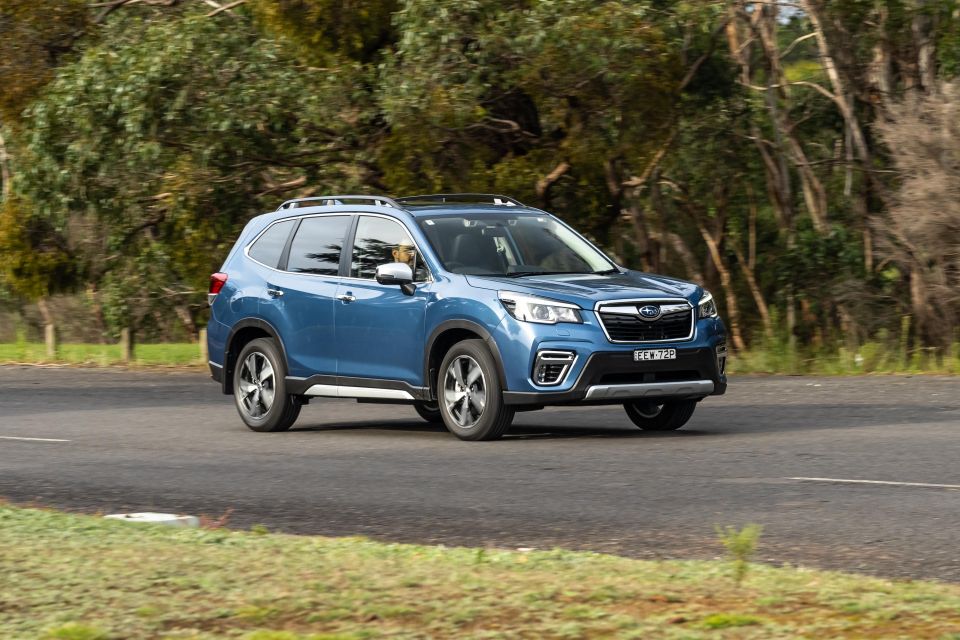
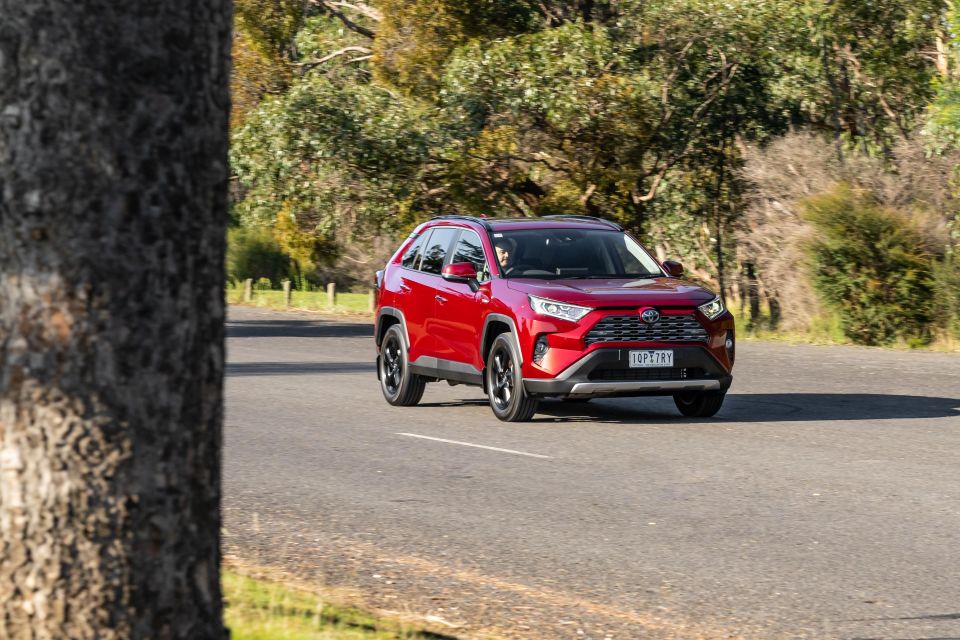
It’s not quite apples and oranges, but the integration and effectiveness of these electric drive systems is quite different.
Both rely on petrol as the principal power source, with the electric motor the backup. Both hybrid systems charge the motor’s battery by capturing kinetic or braking energy, or through the engine. Neither has a plug.
Subaru Forester
Its comparatively low outputs mean the electric motor is very much a supplementary power source here.
The Forester doesn’t always respond to a jab of the start button with electric silence. Sometimes the high-revving idle of the engine is what greets you.
And while you can roll off the line electrically, the petrol engine kicks in as soon as you apply slight throttle pressure. The car can coast at low speeds as an electric vehicle for short periods in a car park
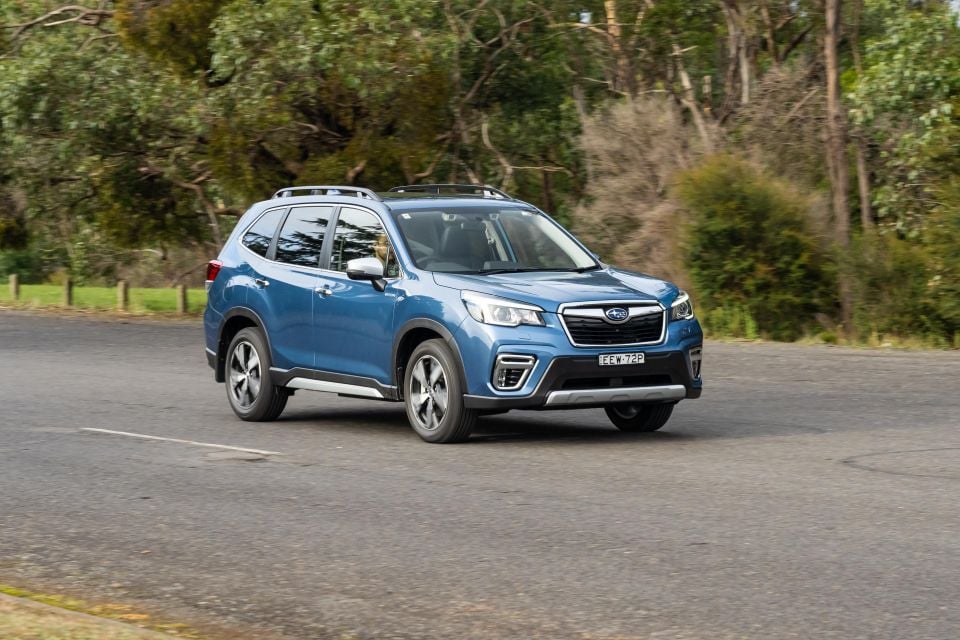
If you’re travelling at high speed under petrol power and lift off, for instance down a hill or preparing to slow down, the engine does decouple from driving and charges the battery.
The combination doesn’t have an awful lot of power for a 1642kg SUV, so your progress even in the throttle-sharpening and transmission-remapping Sport mode is stately. I timed a 0-100km/h run of 10.5 seconds.
In urban routes where the motor and battery are more active, the fuel saving in this hybrid over a non-hybrid Forester is 19 per cent. But on highways, fuel use is almost identical: 6.3L/100km vs 6.2L/100km. That’s because at high speeds the petrol engine does all the work.
If you’re a regional buyer who spends lots of time on a highway, I honestly don’t see the point, especially given you lose the spare wheel.
My average combined-cycle fuel use against the claim was 7.4L/100km, which is frankly pretty ordinary for a hybrid.
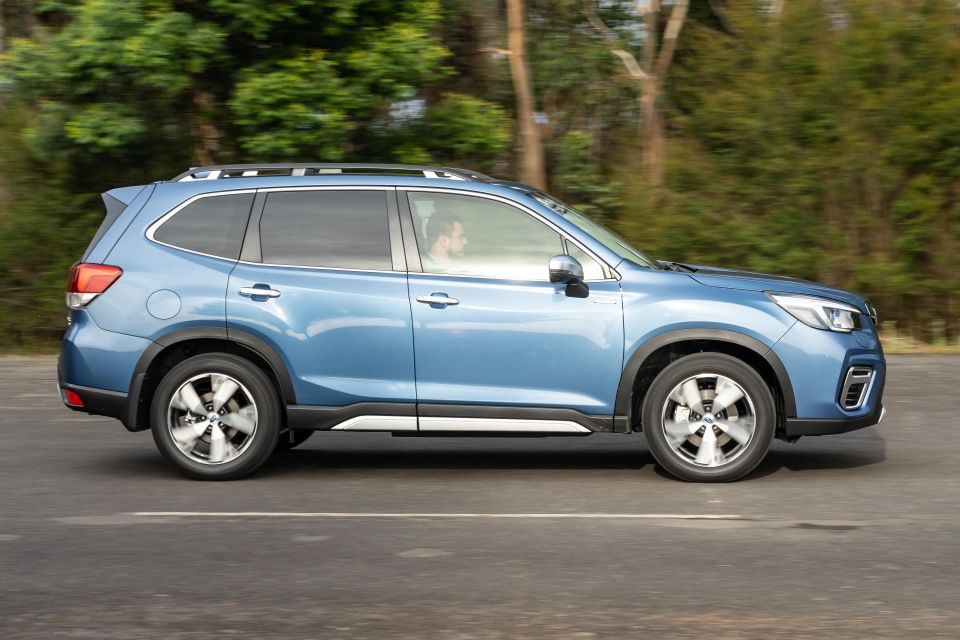
The hybrid’s 1200kg braked-trailer towing capacity is 300kg lower than the petrol-only model.
Like other Forester grades, the Hybrid S uses a permanent all-wheel drive (AWD) system with an active torque split between the axles, controlled up the driveline rather than using a separate rear-axle motor like the Toyota’s optional setup.
With an ample 220mm of ground clearance, active torque vectoring, throttle, transmission and stability modes designed for slippery-surface take-offs, and hill-descent control, there’s no reason this won’t remain one of the more capable soft-roaders in the class.
The suspension remains a MacPherson-strut front and double-wishbone independent rear setup, with ventilated brakes at both ends, a motor-driven power-steering system, and a 10.8m turning circle. The tyres are Bridgestone 225/55 R18s.
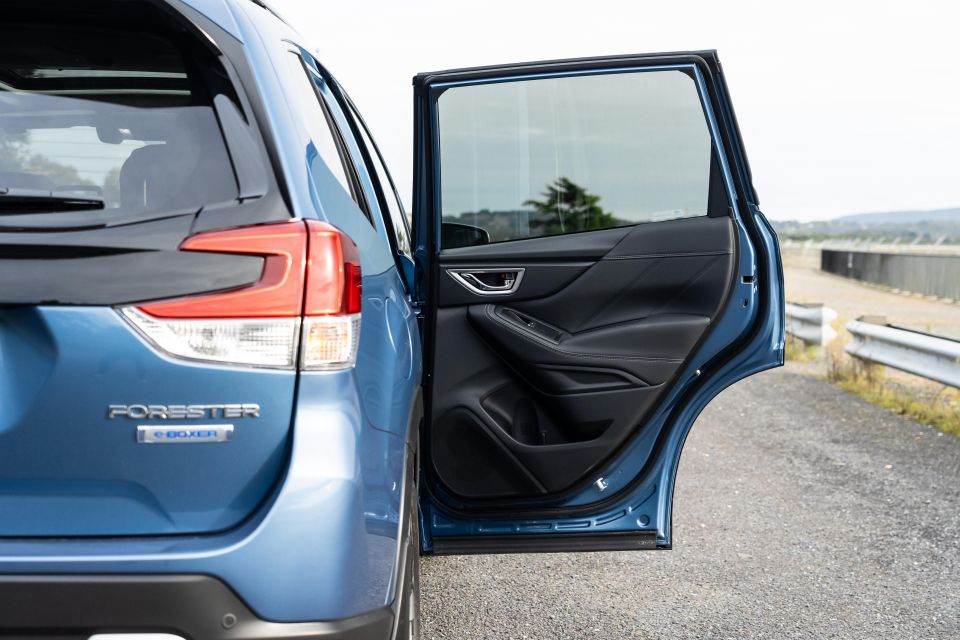
The hybrid system adds about 70kg to the tare mass.
Overall it rides and handles pretty well. The outward vision is top notch, and the active safety systems worked as expected. The steering is light, and body control in corners pretty good. There’s not much lean, even if it’s not as agile as the RAV4.
Noise and vibrations are suppressed well, and the ride quality on damper/spring compression is quite smooth, and controlled on rebound. It occasionally feels a little unsettled and ‘busy’ over choppy roads, but overall the dynamic experience is quite pleasant.
However, as you’ll see, the RAV4 is faster and more efficient, more refined, and has a more comfortable ride over choppy surfaces. Only if you’re someone who does occasional mild off-roading, is the Subaru the better option.
Toyota RAV4
The drivetrain is silent on most startups and when you’re stationary in traffic.
The battery and motors also power the car from startup to 40km/h, provided your throttle inputs aren’t too harsh, and in reverse as well. You can drive for a few kilometres as a majority EV in urban areas.

When you lift off the throttle to either coast down a hill or prepare to stop for a traffic light, the petrol engine becomes a generator as it does in the Forester.
When you’re driving normally, the petrol engine kicks in quietly and without any obvious vibrations, and the CVT does a good job of keeping engine revs down.
There’s an Eco mode that numbs the throttle, a Sport mode that does the opposite and encourages the engine and motors to work in tandem, and an EV mode that prioritises use of the batteries. But you don’t really need to worry about any of this stuff.
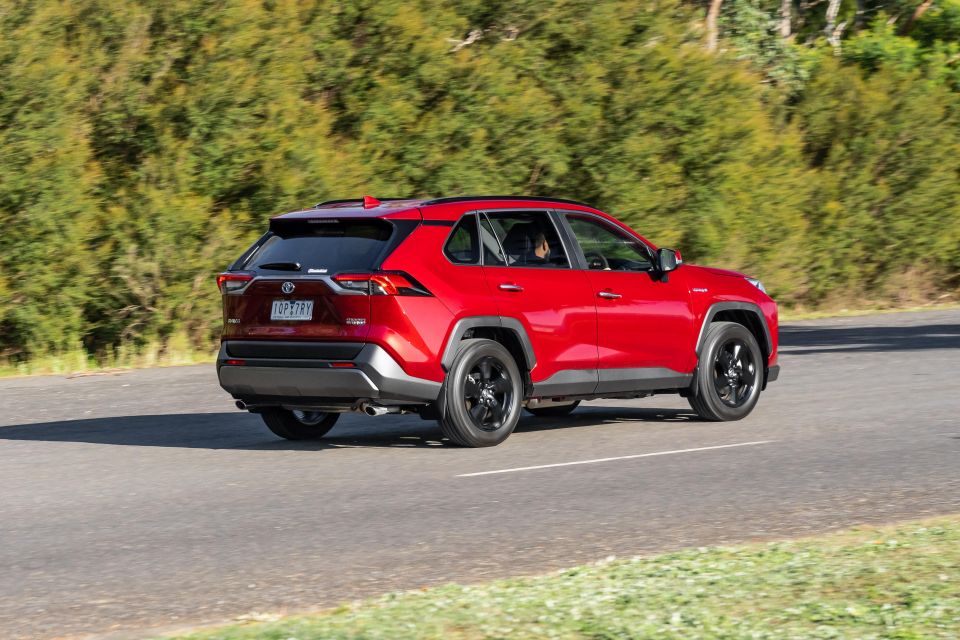
If you want to understand what’s happening – are the motor and battery powering the vehicle, or is the petrol engine, is the energy recuperation system operational, etc – there are live animations that can be viewed on the centre display.
It’s clearly quicker than the Subaru, averaging 8.5 seconds to 100km/h.
The CVT is more refined and the electric-assisted initial pedal response and mid-range urgency are both greater. The system output of 160kW is nothing to sneeze at.
The best fuel economy I achieved was 4.8L/100km and the worst 5.6L/100km, and not all of my driving was gentle and economy-minded. Given the tank is 55L, you get a diesel-like range of around 1000km.
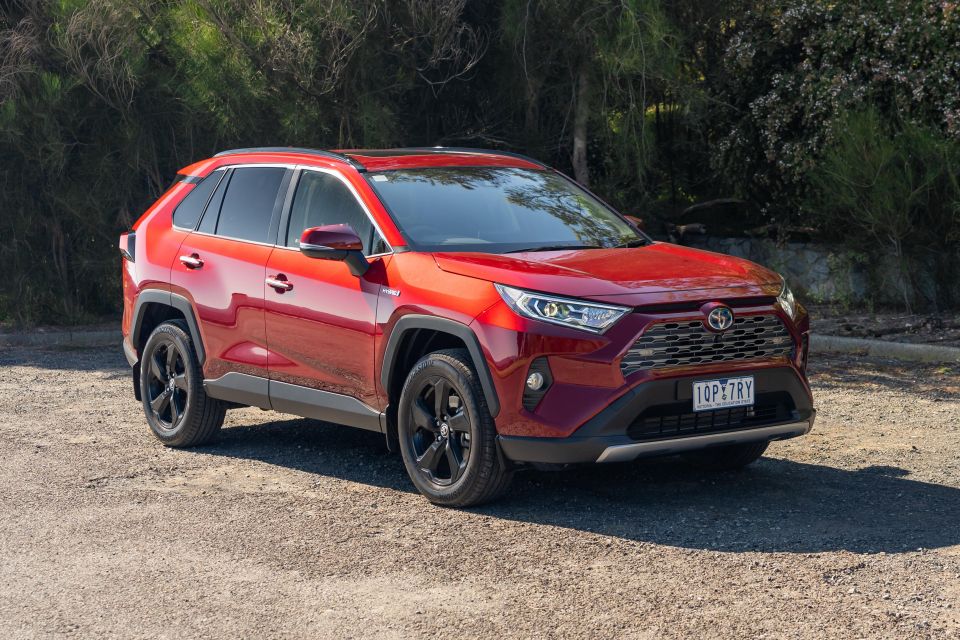
One major disappointment is the towing capacity. While the AWD hybrid can tow a 1500kg braked trailer, the 2WD one we have here is only rated to tow 480kg.
The RAV4 shares its modular ‘TNGA’ platform with the Camry, and compared to the old model is 30mm longer and up to 55mm wider between the wheels. Because it uses lots of high-tensile steel it’s both lighter and stiffer than before.
The front suspension comprises MacPherson struts, and at the rear is a multi-link independent setup. Toyota says its decision to reposition the stabiliser bar, dampers, and trailing arms improves the shock absorption.
There’s a new electric motor-assisted steering system with a quicker ratio, and brake-torque vectoring in corners.
At 1550kg, the RAV4 2WD Cruiser hybrid is 70kg heavier than the equivalent 2.0-litre petrol.
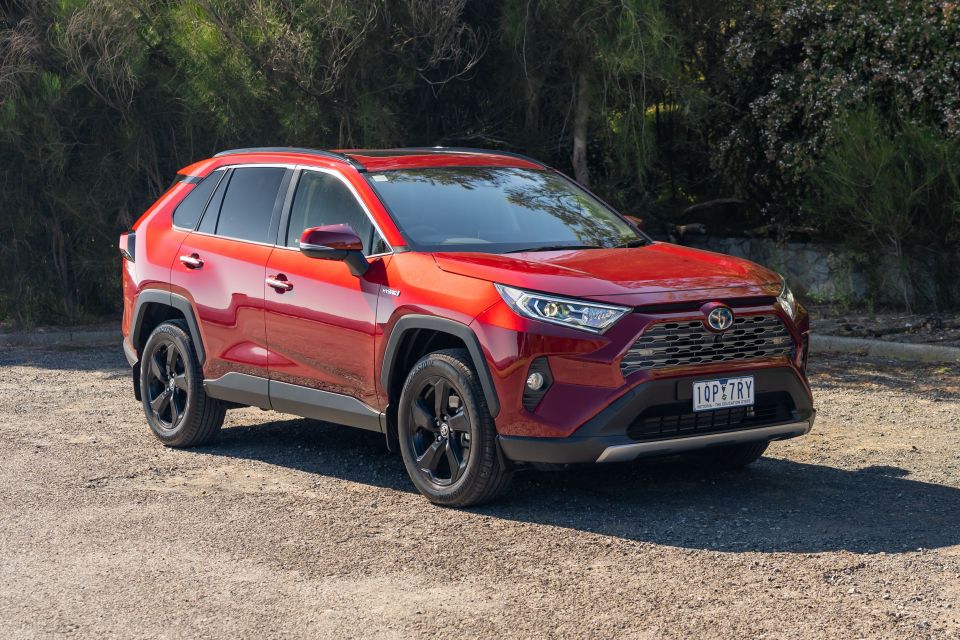
I think the most impressive aspect of the RAV4 is the way it rides. It soaks up sharp hits like speed bumps and corrugated roads brilliantly. It isolates occupants on compression and controls rebound well, meaning you’re insulated from the hit and don’t suffer any loss of body control on the other side.
The refinement is also good, with little to report in the way of wind roar past the mirrors or road roar from the tyres, and the hybrid system itself is much quieter and less buzzy under heavy throttle than previous iterations were notorious for being.
At the same time, it’s actually quite agile for a SUV, with actuators braking the inside wheel on turn-in, and the quicker steering ratio and well-sorted handling against lateral loads making this one family bus that you can push through corners.
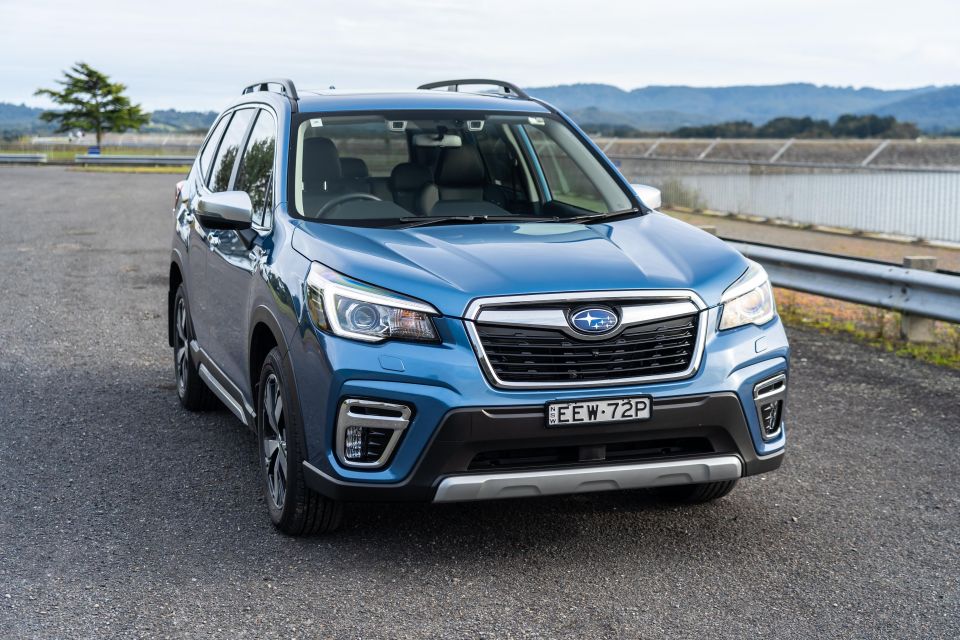
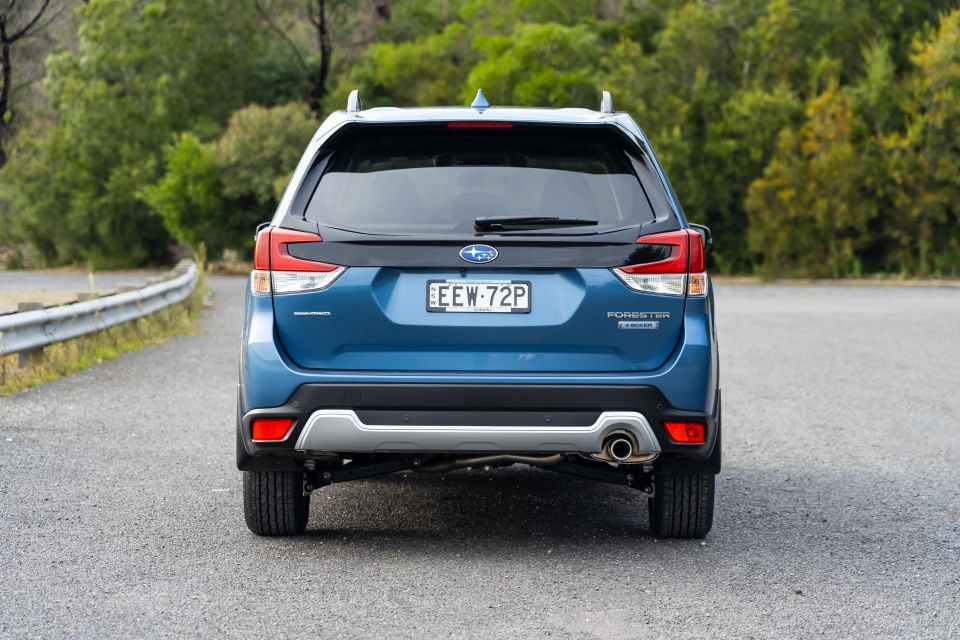
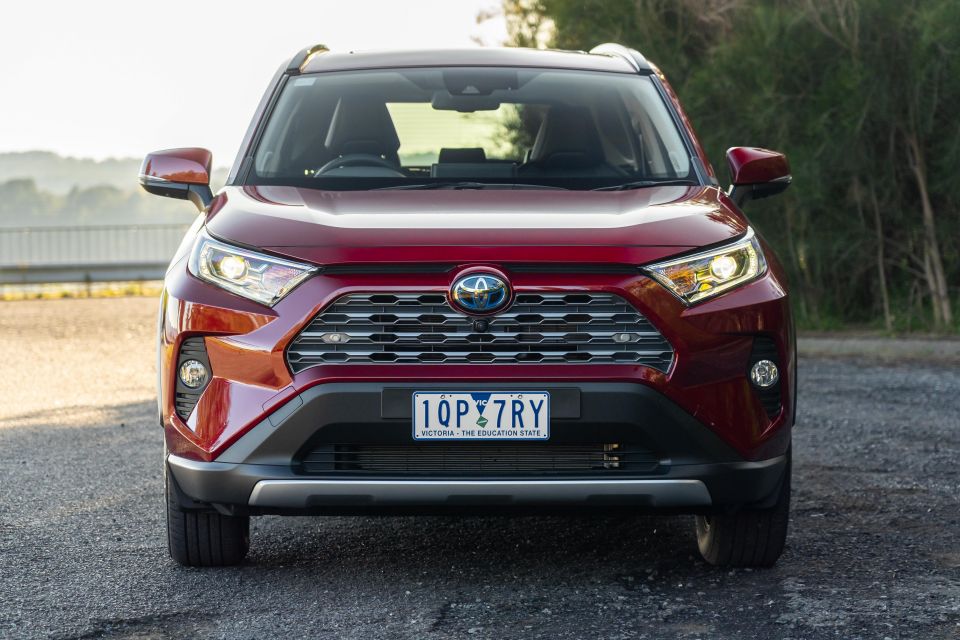
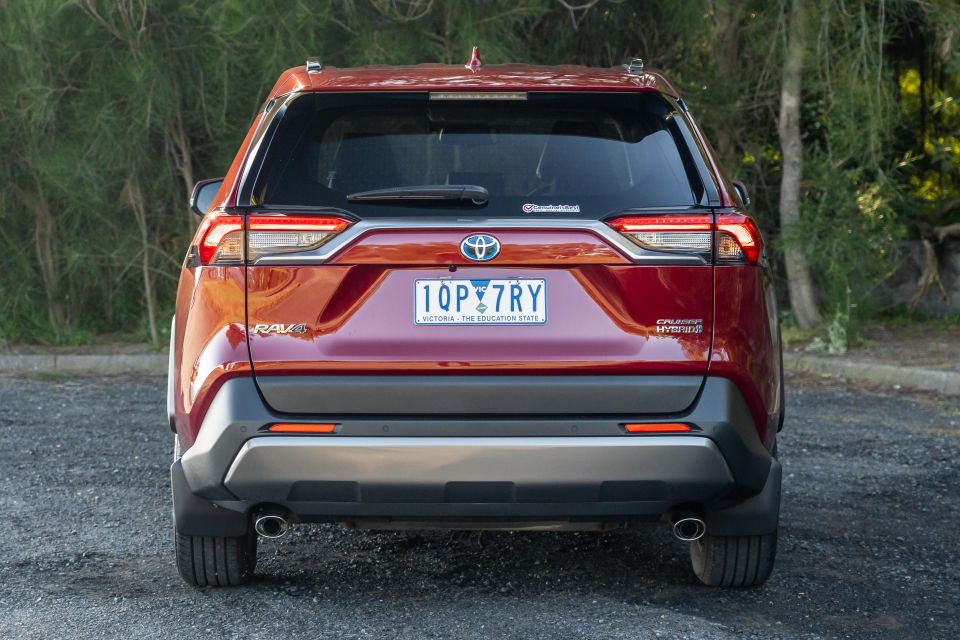
All Subaru hybrids have a five-year and unlimited-kilometre warranty, plus an eight-year and 160,000km lithium-ion battery warranty.
You can purchase a servicing plan that covers five services at intervals of either 12 months or 12,5000km – whichever you hit first. The cost of each service at current prices are: $350.25, $588.31, $354.83, $787.77. All up this equals $2091.16.
Toyota offers a five-year, unlimited-kilometre warranty, plus roadside assistance. If you keep using Toyota for servicing, the battery warranty is 10 years, otherwise it’s five.
It offers capped-price servicing and has the country’s biggest dealer network. Each of your first four visits at intervals of 12 months or 15,000km, whichever comes first, cost $215 apiece. That’s $860.
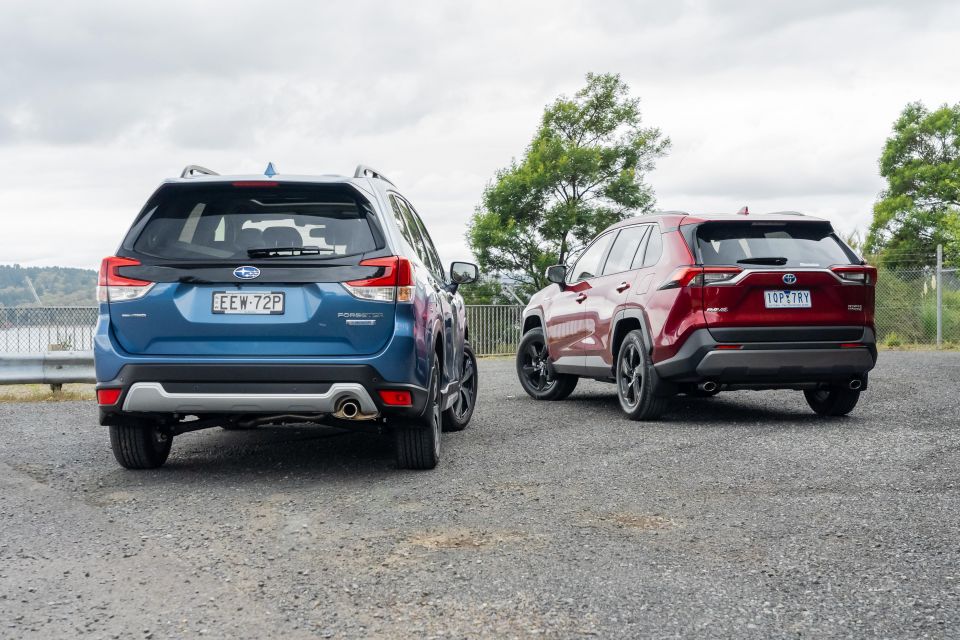
The Subaru Forester is a good platform to work from, with excellent safety credentials, a roomy interior, and proven all-weather chops. But the hybrid system doesn’t do enough to justify the extra cost, since in Australia we’re not taxed on our CO2 footprint.
The RAV4’s hybrid system is far more accomplished, and is an absolute no-brainer over the regular version. The Toyota itself also presents better and has more dynamic polish, as well as service costs that can’t be beat. It’s our segment benchmark for good reason.
Share your thoughts with us in the comments below!
Share your thoughts and write a review of a car you own and get featured on CarExpert.


William Stopford
49 Minutes Ago


Matt Campbell
9 Hours Ago


Max Davies
1 Day Ago


William Stopford
1 Day Ago


Derek Fung
1 Day Ago


Max Davies
1 Day Ago